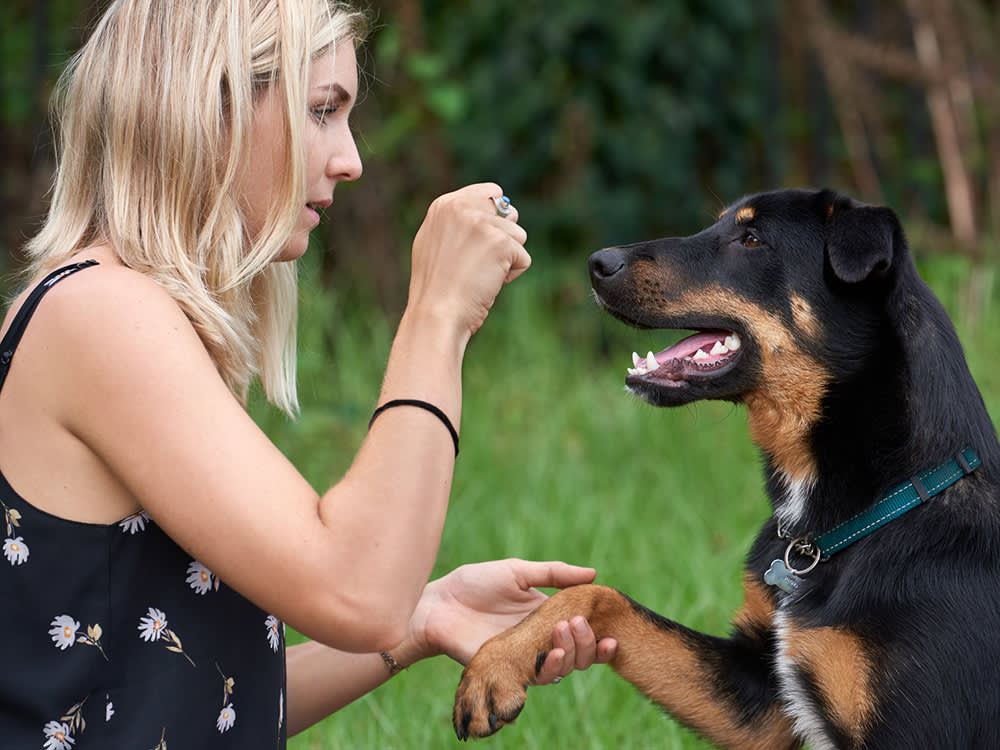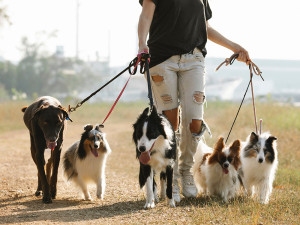Should Shelter Dogs Be Subjected to Behavioral Tests?
Research shows these tests are unreliable.
It’s a difficult situation: Shelters need to avoid putting an aggressive dog up for adoption, but how can they predict a dog’s true behavior? Nine and a half times out of 10, they have no information about how the dog acts in a home environment — or in any other environment, for that matter. Too often, overworked and under-trained staff are left to make a decision after interacting with a dog for less than an hour. A mistake in one direction can mean that a new pet parent is bitten. A mistake in the other can mean a good dog doesn’t go home, or worse, is needlessly euthanized.
In an effort to improve these odds, many shelters use behavioral assessment protocols, or tests that place a dog in a series of situations that are meant to simulate challenges they might encounter in a home — for example, pinching their flank to mimic harassment by a child, introducing a person in a funny hat to test their tolerance for a wide range of human appearances, or exposing them to another dog to gauge aggression.
Trick question: All dogs are perfect! But find out which type is the best fit for you.
But are these tests reliable? So far, research shows they are not. One study on the accuracy of dog behavior assessment tests found that the Assess-a-Pet dog temperament test incorrectly classified 41 percent of nonaggressive dogs as aggressive, and SAFER did even worse. “These are pretty chilling results. They could be interpreted to mean that the two most widely used behavioral assessments in the United States are not doing even a passable job of predicting aggression, and that shelters are not doing much more than flipping a coin when they use an assessment to decide whether a dog will be put on the adoption floor or, potentially, euthanized,” says Jessica Hekman DVM.
According to the ASPCAopens in new tab, “behavior assessments have not proven highly accurate or precise when used to predict aggression after adoption. It has been suggested that a significant number of dogs exhibiting aggression on an assessment do not do so in a home. For these reasons, the ASPCA maintains that euthanasia decisions should not be based solely on a dog’s behavior during an assessment or in any other single situation unless the aggression is egregious.”
How much do you spend on your pet per year?
Behavior testing an animal in a shelter setting is fraught with problems. Even the most modern of shelters can be a stressful place for many dogs, as Dr. Sara Bennett, a vet behaviorist, detailed to The New York Times: “Dogs thrive on routine and social interaction. The transition to a shelter can be traumatizing, with its cacophony of howls and barking, smells and isolating steel cages. A dog afflicted with kennel stress can swiftly deteriorate: spinning; pacing; jumping like a pogo stick; drooling; and showing a loss of appetite. They may charge barriers, appearing aggressive.”
More and more studies, such as the one co-authored by Dr. Gary Patronek and Janis Bradley of the National Canine Research Councilopens in new tab, suggest that shelters should instead devote limited resources to “spend time maximizing opportunities to interact with dogs in normal and enjoyable ways that mirror what they are expected to do once adopted (e.g., walking, socializing with people, playgroups with other dogs, games, training).”
“The tests are artificial and contrived,” notes Dr. Patronek, who published an analysis opens in new tab concluding that the tests have no more positive predictive value for aggression than a coin toss. Plus in many of the overcrowded shelters, the assessments are left up to staff members, who aren’t well trained, and who certainly aren’t behaviorists, to make the final say. “Interpreting dogs, with their diverse dialects and complex body languageopens in new tab — wiggling butts, lip-licking, semaphoric ears and tails — often becomes subjective.” As Dr. Hekman opens in new tab noted, she had “observed a behavioral assessment in which a dog was repeatedly harassed with a fake hand because the shelter staff had a suspicion that he would bite. As the tester continued to provoke him long after this sub-test would normally have ended, the dog froze, then growled, then finally bit the hand, but not hard enough to damage it. Despite his restraint in the face of persistent harassment, he was labeled as aggressive by the shelter staff and was euthanized.”
One of the tests that is most disputed is the food test. Research has shownopens in new tab that shelter dogs who guard their food bowls, do not necessarily do so at home. And even Emily Weissopens in new tab, the ASPCA researcher whose SAFER behavior assessment is one of the best-known, has stepped away from food-bowl tests, saying that research showed that programs that omit them “do not experience an increase in bites in the shelter or in adoptive homes.” Another study showed a stunning revelation: of 96 dogs who had tested positive for food aggression in the shelter, only six displayed it in their new homes. This raised more interesting questions: Is it possible that dogs are showing food aggression in the shelter due to stress? Is food aggression testing completely useless?
Tests that try to assess dog-on-dog aggression using a “fake” dog also have been shown to be less than ideal. One study showed that shelter dogs respond more aggressively to fake dogs than to real ones.
The good news is that the ASPCA is reporting that annual adoption rates are on the rise, euthanasia rates are down, and more and more shelters are employing more humane and effective methods, such as programs like Aimee Sadler’s Dogs Playing for Life opens in new tab that matches dogs for playgroups. As Natalie DiGiacomo, shelter director of the HSUS has noted: “There is a reform movement underway to improve the quality of life for animals in shelters, and playgroups are pivotal to this effort. Play enriches dogs’ lives and reduces stress so their true personalities show.”
The bottom line? It’s a complex situation but it’s important to heed the findings from Dr. Patronek: “Nothing in the prevalence estimates we reviewed suggest that overall, dogs who come to spend time in a shelter (and are not screened out based on history or behavior at intake or shortly thereafter) are dramatically more or less inclined toward problematic warning or biting behavior than are pet dogs in general.” You can help by getting the word out to your local shelters about the unreliability of behavior testing — you’d be surprised by how many still employ them.








